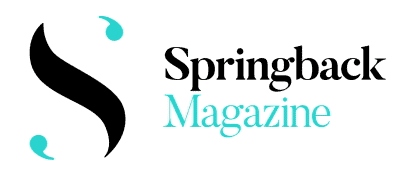Springback Academy 2019
Feature

Same difference: on life, death and monotony
“What is an Aerowaves piece?” asked director John Ashford at Aerowaves’ own Spring Forward festival in 2019. An interesting question, and you need only glance at the range of work in any year to see that it has no definite answer. Still, like seeing a figure within a pattern of dots, sometimes you can spot a theme. At the 2014 festival (Umeå, Sweden), I noticed several works that deliberately tested the limits (the performers’ and the audience’s) of endurance and repetition. Was that a “thing”? I decided it was, and I ended up writing a longer article about the idea. Then at the 2016 festival (Pilsen, Czech Republic), I and pretty much everyone else noticed another theme: death. I wrote about that too.
I also discerned a pattern in this year’s festival, but I’m not sure what to say or even think about it. Perhaps I should simply say what it is. It is a particular dramatic trajectory that I noticed in four distinct works, and it goes something like this:
same same same same same same same same same same same same same same same same same same same same same same same same same same same same same same same same same same same same same same same same same same same same same same same same same same different* the end
I put an asterisk after “different” because one work went straight through to the end, no difference.
Here are the four works, listed in ascending order of sameness.
1 Elinor Lewis & Nuria Legarda Andueza, Orchard (17 min)
Same: The performance area is set with a forest of cardboard tubes, standing precariously upright. Beige, and almost immobile, Lewis and Andueza are not unlike cardboard tubes themselves, but with Vidal Sassoon hair. They hover like twin entities among the tubes, and eventually carefully begin to slide, crouch and slalom between them.
Different: Suddenly they topple over a load of the tubes.
The End.
2 Thomas Bîrzan and Mario Barrantes Espinoza, Drift I (30 min)
Same: A row of lights glows in the distance. Backs towards us Bîrzan and Espinoza sit side by side on a carpet. They move super-slowly into slightly different formations, always keeping right next to each other. Eventually, one climbs super-slowly onto the shoulders of the other.
Different: The lights blaze, and fade.
The End.
3 Katerina Andreou, BSTRD (40 min)
Same: Andreou puts on a record. She jogs and bops to its relentlessly monotone beat. Puffs of smoke billow. Lights flash. She drinks water. Half way through she flips the record over. The B side is, in every way, the same as the A.
Different: The music goes ambient. Andreou shakes a cloud of powder from a t-shirt. Smoke disperses.
The End.
4 Lina Gómez, Restraint (25 min)
Same: Michelangelo Contini, back towards us, bangs out thunderous vibrations on his drum kit. Dancer Julek Kreutzer jiggles and judders like a human wobbleboard.
Different: There is no different.
The End.
What to say? Honestly, I am a little flummoxed, but let me offer two responses.
First, in these works’ focus on image and concept, I sense the influence of contemporary visual art on choreography and performance (passim: I do sometimes wish the influence were more the other way). A focus on image tends to neglect temporal and often spatial dynamics: performativity is reduced to being “live” and “durational” (the artwork, we might say, is present). Galleries, where visitors pass by, favour that flatness in the treatment of time; theatres do not. As for concept, you can read what I think at greater length in a piece I wrote at last year’s festival, but here is the short version: it’s the material that matters, not the idea.
Second, might this structure – same-same-same-same-same-same-(different)-end – actually mean something? In that article from 2014, I applied literary critic Frank Kermode’s idea of the “sense of an ending” to choreography based on repetition and endurance. If you don’t want to read the long version, the short version is: I decided that choreography which structures time as tick, tick, tick, tick, tick rather than tick-tock, tick-tock, tick-tock is indicative of our ultimate existential pointlessness and the godless nature of our universe. Oh yes, I went big! My prime example was Maguy Marin’s Umwelt, which I consider a glimpse into the void at the heart of our existence, and call people who can’t handle it wimps.
But in Umwelt, and the other works I wrote about then, there was at least a sense of accumulation through time. To be more metaphysical about it: life accumulates stuff, then you die. These four pieces take nihilism to the next level: life is just more of the same, and then you die. For the only substantive change in the lives of these performances – toppling tubes, a blaze of light, dispersing smoke, a cessation of vibration – is in fact their death: the end. And the rest is silence.
Where do we go from here?

